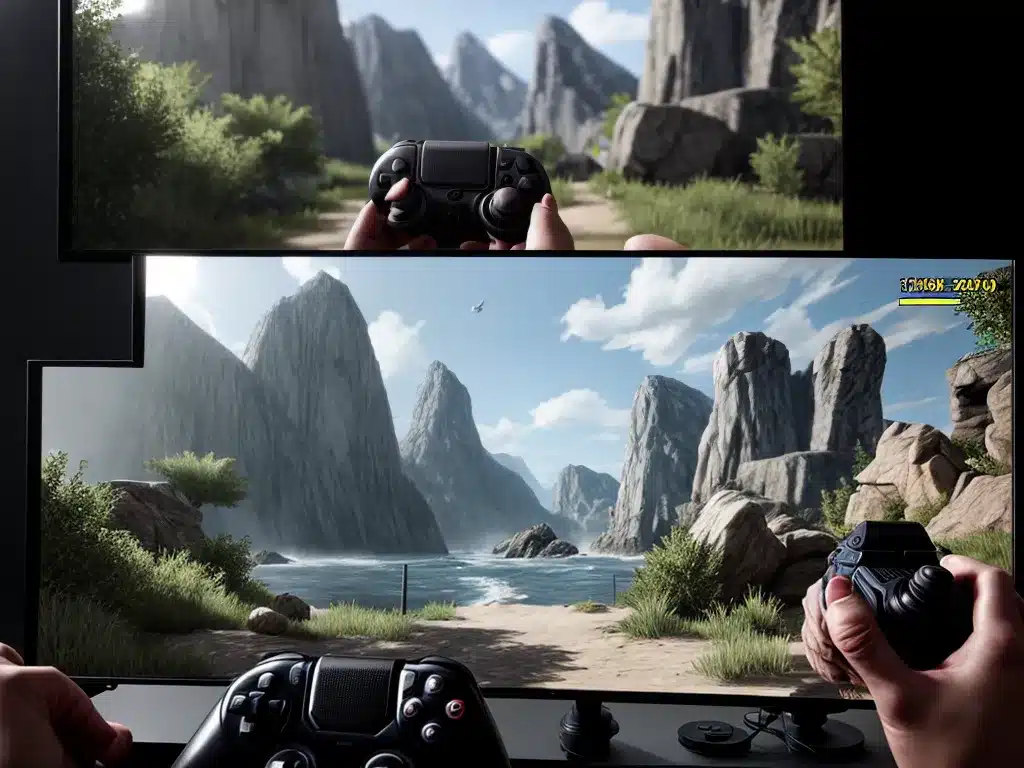
I have been fascinated with video game graphics for as long as I can remember. As a gamer, I am always eager to see just how realistic developers can make their virtual worlds look. In particular, I am intrigued by the concept of photorealism in games – the notion that game visuals could one day become indistinguishable from real life. In this article, I will explore the evolution of photorealism in games, where the technology currently stands, and make some predictions about how much closer we can get to creating truly photorealistic video game environments.
The Quest for Realism
Ever since the early days of video games, developers have been trying to make their pixelated characters and environments look more lifelike. While the blocky graphics of the 1970s and 1980s evoked a certain retro charm, the goal has always been to immerse players in worlds that look and feel as realistic as possible.
The first major leap came with the transition from 2D to 3D graphics in the mid-1990s. Games like Donkey Kong Country and Virtua Fighter demonstrated the graphical potential of this new dimension, with 3D models and textures that were lightyears beyond their pixelated predecessors. Still, these early 3D worlds were quite rudimentary, with low polygon counts, blurry textures, and robotic character animations. Photorealism was still a distant dream.
The Rise of Real-Time Graphics
The next quantum leap came in the early 2000s with the advent of programmable shaders and other advanced real-time graphics techniques. Sophisticated lighting, normal mapping, motion blur, and depth of field effects became possible in real-time game engines like Unreal Engine 3. Characters and environments with millions of polygons and high resolution textures could be rendered interactively.
Games like Crysis and Gears of War in the late 2000s gave us a taste of what realistically lit, shaded and animated game visuals were capable of. The uncanny valley was beginning to narrow.
Ray Tracing Revolution
Most recently, ray tracing has emerged as the next major breakthrough in real-time graphics. Unlike traditional rasterization techniques, ray tracing simulates the way light physically behaves in the real world, producing effects like accurate shadows, reflections, and ambient occlusion.
Since Nvidia introduced RTX ray tracing GPUs in 2018, a number of games like Control and Cyberpunk 2077 have demonstrated that ray tracing can transform game visuals to an unprecedented level of realism. Reflections in puddles or car paint look photographically accurate, as light is traced along its real path.
As ray tracing hardware and software continue to mature, it promises to take in-game photorealism to new heights.
The State of the Art
Thanks to the advancements above, many modern big-budget games are coming remarkably close to photorealism in aspects like environmental graphics, materials, lighting, and post-processing effects. Take a game like Microsoft Flight Simulator 2020 – many of its landscape vistas and aircraft models seem nearly indistinguishable from photographs.
However, some aspects of games still reveal their limitations:
-
Character Faces: Detailed facial expressions with subtleties like skin pores and fine wrinkles remain challenging to accurately render in real-time. Hair is also difficult to simulate convincingly.
-
Motion and Animation: Though advanced motion capturing provides lifelike animations, some minor unnatural glitches and clipping issues can break photorealism. AI behaviors are also not yet perfectly natural.
-
World Detail: While beautiful from afar, environmental details like foliage and debris often lose fidelity up close. Photogrammetry captures real-world objects impressively but can’t match real complexity.
So in summary, while no game completely achieves photorealism today, remarkable progress has been made with environmental graphics, lighting, materials and post effects. Character rendering remains a key challenge.
The Road Ahead
It’s clear that video game graphics will only become more breathtakingly realistic in the years ahead. Here are some key technologies I expect to push graphics closer to photorealism:
-
Ray Tracing Improvements: Dedicated ray tracing hardware and software optimizations will allow for more ray traced effects with fewer performance penalties. Complex global illumination could become possible.
-
Higher Polygon Counts: As GPU power increases, so will the number of polygons that can be processed in real-time, allowing for smoother, more detailed surfaces and objects.
-
AI-Enhanced Materials: Machine learning techniques like generative adversarial networks (GANs) may assist in rendering realistic, varied materials like skin and fabric.
-
Cloud Computing: Cloud-based rendering could enable incredible detail by offloading heavy graphics workloads to remote servers.
-
8K Graphics: Display resolutions will continue to increase, reducing visible aliasing and allowing high-fidelity textures to be appreciated.
-
Photogrammetry Libraries: Extensive photogrammetry asset libraries will provide realistic environmental detail without intensive manual modeling.
-
Next-Gen Animation: Advanced motion capture, skeletal rigging, blend shapes and physics will make characters move and behave more naturally to reach the photorealism threshold.
Final Predictions
Given the exponential pace of graphics innovation, I believe photorealistic gaming is on the horizon. Conservative estimates would put the timeline at around 8-10 years from now. However, I think key breakthroughs in real-time ray tracing, AI-assisted rendering, motion capture and compute power will allow specific photorealistic experiences to arrive even sooner – perhaps 3-5 years for controlled scenarios.
In 20 years, real-time graphics may become so photorealistic that virtual reality is nearly indistinguishable from real life. It is difficult to even imagine what gaming will look and feel like when that level of immersion is achieved. But the rapid advancements we have witnessed in recent decades prove that nothing is impossible in this field. The quest for the perfectly realistic virtual world continues, and the finish line may be closer than we think.












